Crisis Dashboard
Managing a crisis one step at a time

Luckily, as an organization, responding to a crisis (like a fire or explosion) is not your core business. Still, you need to know how to act if such an unlikely event occurs.
That is why we developed our crisis dashboard. It is a tool that navigates you through the complete crisis-managing-process. From the initial spark to the eventual external communication.
All your crisis-related questions answered
During a crisis you pass through different stages, all accompanied by related questions:
Stage 1 | What happened?
Which incident occurred, and what caused it? Was it a fire following an explosion? Was there a release of hazardous substance? Were bystanders or employees injured during the pivotal event?
Stage 2 | What can we do?
Can we manage the implications of the event within the organization (and how?), or do we require assistance from public emergency services?
Stage 3 | What are the consequences to our organization?
What is the impact on the environment, the people & employees, our equipment and infrastructure, and reputation?
Stage 4 | Who do we inform about this crisis and how?
To who, and more important what do we communicate to stakeholders, customers, and families?
To keep a clear head through all of these stages, you can count on our crisis dashboard, which unites answers to any one of these questions in one straightforward tool.
FPC Risk Crisis Dashboard, your anchor in need…
The crisis dashboard:
- Is an unambiguous crisis management tool, available on an A2-printout.
- Displays a methodology that combines best practices and standards with 20 years of safeguarding experience.
- Creates order out of chaos.
- Offers a clear framework that assists into contacting first responders.
- Is fully customized to your organization.
With the crisis dashboard a common problem in crisis management is eliminated: uncoordinated action and ineffective decision-making.
How does it work?
Every level of the crisis response team works with the same tool and the same map, so all actions are synchronized into one viable response.
- A checklist supports the decision-making on every level. It contains concrete agendas and actions, crafted for your organization.
- It allows to share and validate critical information across your teams.
- Every person involved has a uniform view of the crisis.
- It is suitable for dealing with real-time incidents and high-risk operations, but also as a learning tool during training activities.
- As a result of logging all measures taken, the dashboard allows to optimise future crisis management plans.
- The tool can be digitalized in a next phase.
Don’t wait for another emergency to develop your crisis management capabilities.
